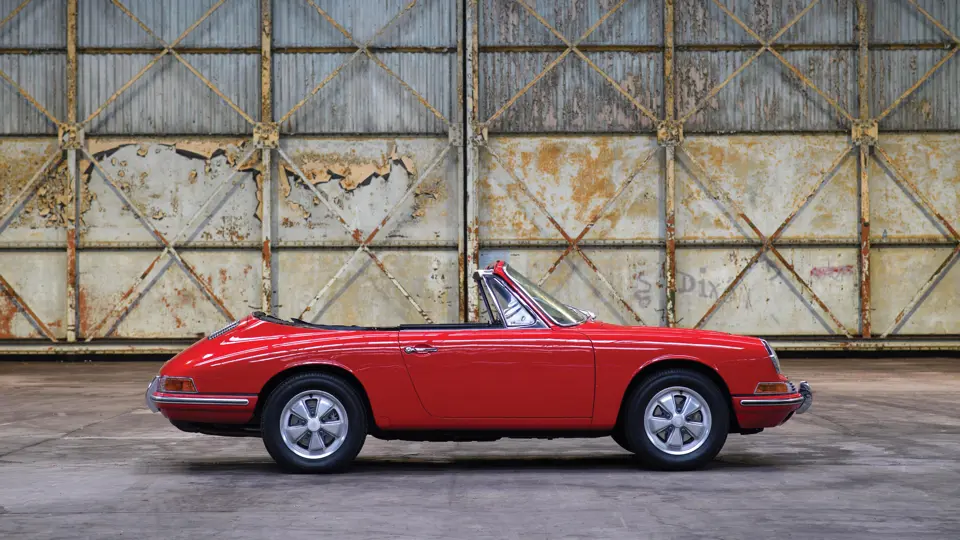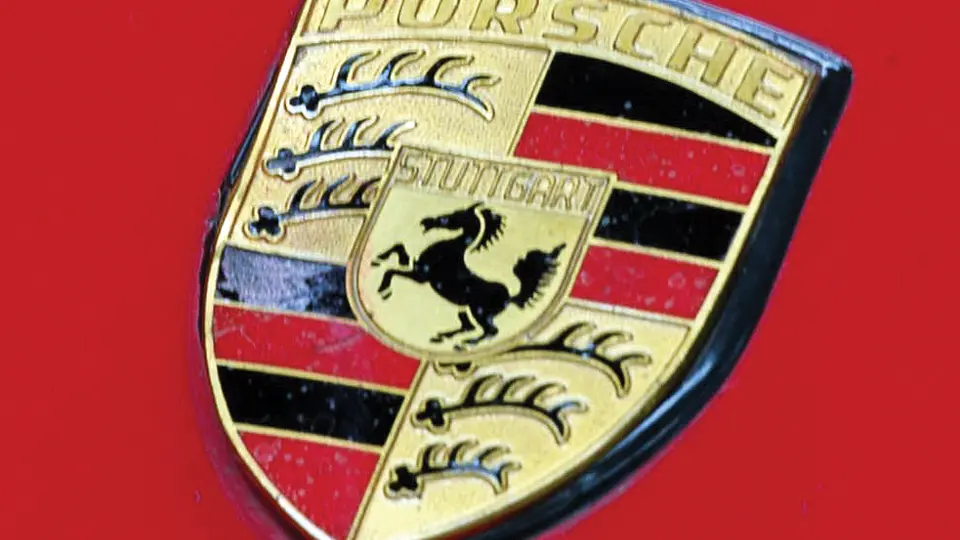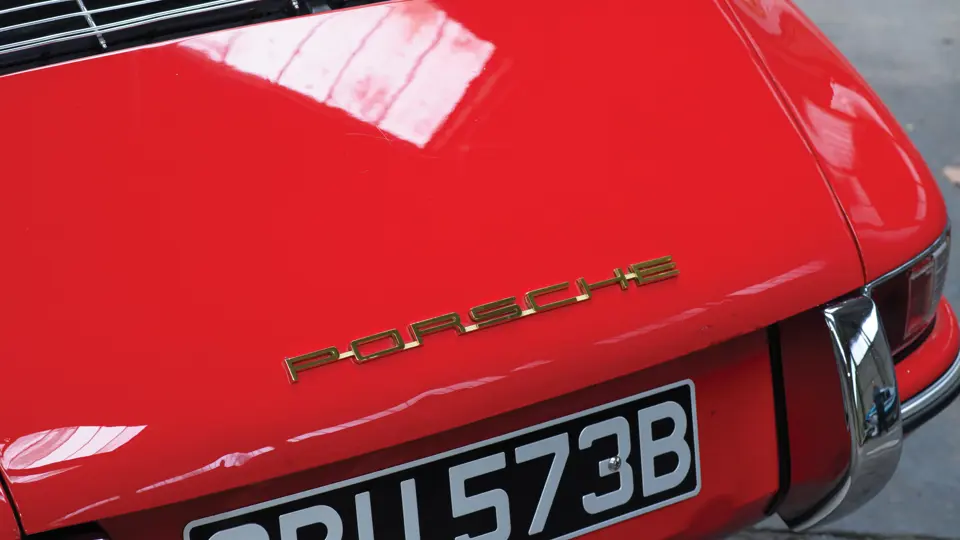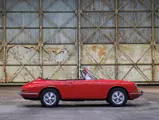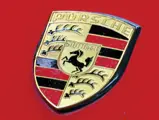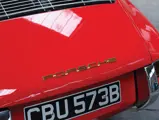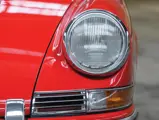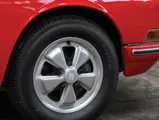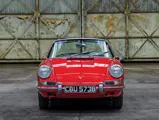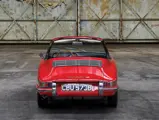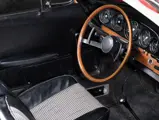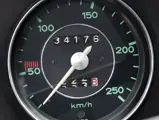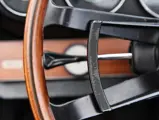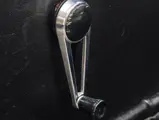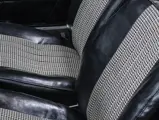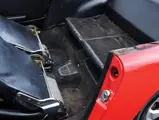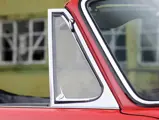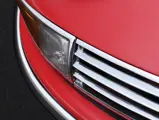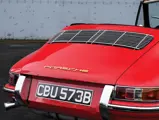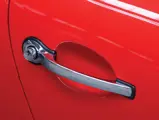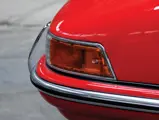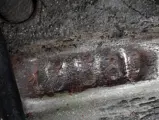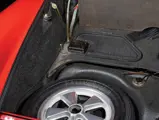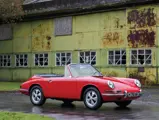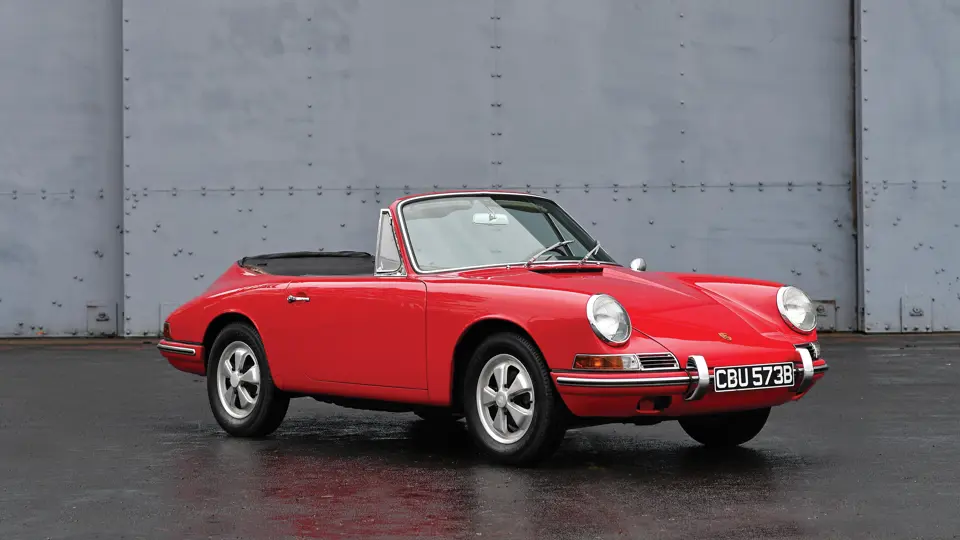
1964 Porsche 901 Cabriolet Prototype by Karmann
{{lr.item.text}}
€649,600 EUR | Sold
{{bidding.lot.reserveStatusFormatted}}
- The only known 901 cabriolet prototype
- The oldest, unrestored Porsche 901
- Largely original condition; documented history
- Shown at the Pebble Beach Concours d’Elegance
- Never before offered for public sale
- Le seul prototype de cabriolet 901 connu
- La plus ancienne Porsche 901 non restaurée
- En état presque complètement d'origine ; historique documenté
- Présentée au concours d'élégance de Pebble Beach
- Jamais proposée à la vente auparavant
130 bhp, 1,991 cc SOHC air-cooled, horizontally opposed six-cylinder engine with Solex carburettors, five-speed manual transmission, independent front suspension with torsion bars and McPherson struts, independent rear suspension with torsion bars, trailing arms, and tubular shock absorbers; and four-wheel disc brakes. Wheelbase: 2,200 mm
Moteur six-cylindres à plat, refroidissement par air, 1 991 cm3, 130 ch, 1 ACT par banc, carburateurs Solex, transmission manuelle cinq rapports ; suspension avant indépendante avec barres de torsion et jambes MacPherson ; suspension arrière avec barres de torsion, bras tirés et amortisseurs télescopiques ; freins à disque sur les quatre roues. Empattement 2 200 mm.
FIRST, LAST, ONLY, AND ORIGINAL
In the world of landmark collector automobiles, the four most important words are first, last, only, and original. Offered here is one of the most significant examples in the long and brilliant history of Porsche’s fabled 911 series, and one that meets all four of those criteria. Chassis number 13360 is the only open-top 901 cabriolet prototype ever built and the second-earliest surviving 901 (the car that would become the 911). That it exists at all today is largely due to good fortune, as almost all of the 13 factory 901 prototype coupes built in 1963 and 1964 were either destroyed or parted out as their usefulness passed.
A CABRIOLET AHEAD OF ITS TIME
This unique automobile opens a window into the minds of mid-1960s Porsche management, which desired to offer a successor to the well-appointed but expensive 356 C/SC cabriolet. Sales of the 356 cabriolet had fallen to just 16 percent of total production in 1964; by 1965, the final year of the 356, the ratio had fallen to just 1 in 20. Financially pressed, Porsche could not risk building a body style of the upcoming 901 that might not sell well.
By mid-1964, however, Porsche’s sales team had already discerned rising demand for a new convertible from one very important market: the United States. The design team, once prepared to not build a convertible of the new model, now hurried back to the drawing board. Within a few short months, chassis number 13360, one of the 901 prototypes, had been shipped to Karosserie Karmann, which sliced away its roof and strengthened and reinforced the chassis. By early September, the 901 cabriolet prototype had returned to Porsche, where it underwent extensive factory testing.
With the 901 having been designed and engineered solely as a closed car, many problems soon became apparent, especially in regard to a properly functioning and weather-tight folding top. Faced with not enough time to make the 901 cabriolet workable for production, Porsche engineers instead turned to modifying a coupe with a strong roll-over hoop and removable roof and rear window panels—thus creating the Targa, launched in 1967 and soon one of Porsche’s most popular offerings.
The prototype 901 cabriolet was covered up and put into storage. It would be another two decades before Porsche once again turned its mind to open skies and finally offered a true, completely open 911 cabriolet to buyers worldwide.
FROM STORAGE TO PEBBLE BEACH
In 1967, the prototype cabriolet was sold by Porsche to German collector and racing driver Manfred Freisinger, of Karlsruhe, after he worked out a deal with Porsche to save the unique prototype from being destroyed. The car then remained in Freisinger’s shops for decades before coming to the attention of American enthusiast Myron Vernis. Mr Vernis is well known in the collector car community worldwide for his appreciation of 'orphan' and one-off automobiles, and the 901 cabriolet certainly met his criteria. In 2001, he succeeded in acquiring the unique Porsche from Mr Freisinger, in trade for a 356 B Carrera GS.
The cabriolet was fitted with a 2-litre flat-six, of the correct type with an early case number. Mr Vernis had this engine rebuilt and put the rest of the car’s running gear into good operating order, but wisely elected to leave the body and interior as he found it, in the ‘untouched’ condition from the time at which Porsche abandoned the project. He drove the car periodically with his family and was invited to show it at the Pebble Beach Concours d’Elegance in 2013, as part of the celebration of the 911’s 50th anniversary.
The following year, the prototype was sold to a British sports car enthusiast, who has similarly maintained this historically important Porsche as he purchased it, recognizing its unique character and place in the factory’s history.
The car is offered in its original Signal Red paint, with a black leatherette interior, both of which show the wear of more than half a century. The seats, which may not be original, have inserts of houndstooth checked fabric. A wood veneer dashboard insert and a wood-rimmed steering wheel offer a warm touch to the otherwise Spartan and business-like interior. There are obvious clues that this was an experimental car, as the interior structure and windscreen header display a number of unused slots and holes, bare patches, and other items that were clearly part of the process of creating the folding top assembly. The early, narrow Fuchs alloy wheels are correct for the period, and the tail lamp assemblies are obviously fabricated pieces. The 901 is said to be an enjoyable driver, however, its 130-horsepower engine and four-wheel disc brakes being perfectly adequate to the task at hand.
Here is an opportunity to acquire a most unique and desirable early six-cylinder Porsche, the first, last, and only one of its kind in the world—and never before offered for public sale. It would be the crowning jewel for any serious Porsche collection.
PREMIÈRE, DERNIÈRE, UNIQUE ET D'ORIGINE
Dans le monde des collectionneurs de voitures qui font référence, les quatre mots importants sont première, dernière, unique et d'origine. La voiture que nous proposons est un des exemplaires les plus significatifs de l'histoire de la célèbre Porsche 911, et elle rassemble ces quatre critères. Avec son châssis n°13360, il s'agit du seul prototype de 901 cabriolet jamais fabriqué, et la deuxième plus ancienne 901 (modèle qui allait devenir la 911). Le fait qu'elle ait pu survivre jusqu'à aujourd'hui est une véritable chance, car presque tous les 13 prototypes usine de 901 produits en 1963 et 1964 ont été ou bien détruits, ou bien démontés quand ils ont perdu toute utilité.
UN CABRIOLET EN AVANCE SUR SON TEMPS
Cette voiture unique ouvre une porte sur l'état d'esprit au milieu des années 1960 des dirigeants de Porsche, qui souhaitaient proposer une remplaçante du cabriolet 356 C/SC, bien équipé mais cher. Les ventes du cabriolet 356 étaient tombées à 16% de la production totale de 1964 ; en 1965, dernière année de commercialisation de la 356, ce pourcentage était encore plus bas, à 5%. Dans une situation financière délicate, Porsche ne pouvait pas prendre le risque de produire la future 901 dans une version de carrosserie qui ne se vende pas bien.
Au milieu de l'année 1964, l'équipe commerciale de Porsche avait déjà identifié une demande grandissante pour un nouveau cabriolet sur un marché très important, celui des États-Unis. L'équipe de conception, qui n'avait pas prévu de version décapotable, se penchait à nouveau sur la planche à dessin. En quelques mois, le châssis n°13360, un des prototypes 901, avait été envoyé chez Karmann qui avait coupé le pavillon et renforcé le châssis. Au début du mois de septembre, le prototype de 901 cabriolet était revenu chez Porsche, où il était soumis aux essais intensifs de l'usine.
La 901 ayant été conçue et fabriquée comme une voiture fermée, un grand nombre de problèmes surgissaient, comme la difficulté de réaliser une capote hermétique capable de se replier correctement. Manquant de temps pour fabriquer un cabriolet qu'il soit possible de produire en série, les ingénieurs Porsche finissaient par modifier un coupé avec une lunette arrière souple et un panneau de toit amovible, ce qui débouchait sur la version Targa : lancée en 1967, elle allait rencontrer un vrai succès commercial.
Le prototype de 901 cabriolet était alors mis sous bâche et remisé. Il allait falloir attendre 20 ans pour que Porsche finisse par proposer un vrai cabriolet 911 aux amateurs du monde entier.
DE L'ENTREPÔT A PEBBLE BEACH
En 1967, le prototype de cabriolet était vendu par Porsche au collectionneur et pilote allemand Manfred Freisinger, de Karlsruhe, après qu'il ait obtenu l'accord de Porsche pour sauver ce prototype unique de la destruction. La voiture restait ensuite dans les locaux de Freisinger pendant des années avant d'attirer l'attention du passionné américain Myron Vernis. M. Venis est connu dans le monde des collectionneurs pour son intérêt pour les modèles uniques, ce qui était évidemment le cas du prototype de 901 cabriolet. En 2001, il parvenait à faire l'acquisition de cette Porsche unique auprès de M. Freisinger, en échange d'une 356 B Carrera GS.
Le cabriolet était équipé d'un six-cylindres à plat 2 litres du type correct, avec un numéro de moteur ancien. M. Vernis faisait refaire le moteur et remettait en état la mécanique de la voiture, mais choisissait sagement de laisser la carrosserie et l'habitacle tels qu'ils étaient, dans le même état qu'au moment où Porsche avait abandonné le projet. Il utilisait ensuite la voiture régulièrement avec sa famille, et il était invité à prendre part en 2013 au concours d'élégance de Pebble Beach, dans le cadre de la célébration des 50 ans de la Porsche 911.
L'année suivante, le prototype était cédé à un passionné anglais de voitures de sport, qui a lui aussi préservé cette Porsche historiquement importante dans le même état d'origine, reconnaissant son caractère unique et sa place dans l'histoire de la marque.
La voiture est vendue dans sa teinte d'origine "Signal Red", avec intérieur en simili noir, et elle présente les signes d'usure correspondant à plus d'un demi-siècle d'existence. Les sièges, qui ne sont peut-être pas d'origine, montrent des inserts du célèbre tissu en pied de poule. Un placage bois au tableau de bord et un volant bois apportent une touche plus chaude, dans un habitacle par ailleurs relativement dépouillé. Il existe d'autres signes montant qu'il s'agit d'une voiture expérimentale, car la structure interne et le pare-brise présentent des orifices inutilisés, des parties nues, ou d'autres détails qui faisaient clairement partie du processus de création d'un système de capote. Les fines jantes Fuchs en alliage correspondent bien au modèle d'époque, et les feux arrière sont des pièces fabriquées. Il n'en reste pas moins que cette 901 a la réputation d'être une voiture agréable à conduire, son moteur 130 ch et ses freins à disque étant parfaitement à la hauteur de la tâche.
Voilà donc l'opportunité d'acquérir une des Porsche six-cylindres les plus anciennes, modèle unique et particulièrement désirable, la première, la dernière et la seule de son genre, et qui n'a encore jamais été proposée en vente publique. Elle constituera le joyau couronnant toute collection sérieuse de Porsche.
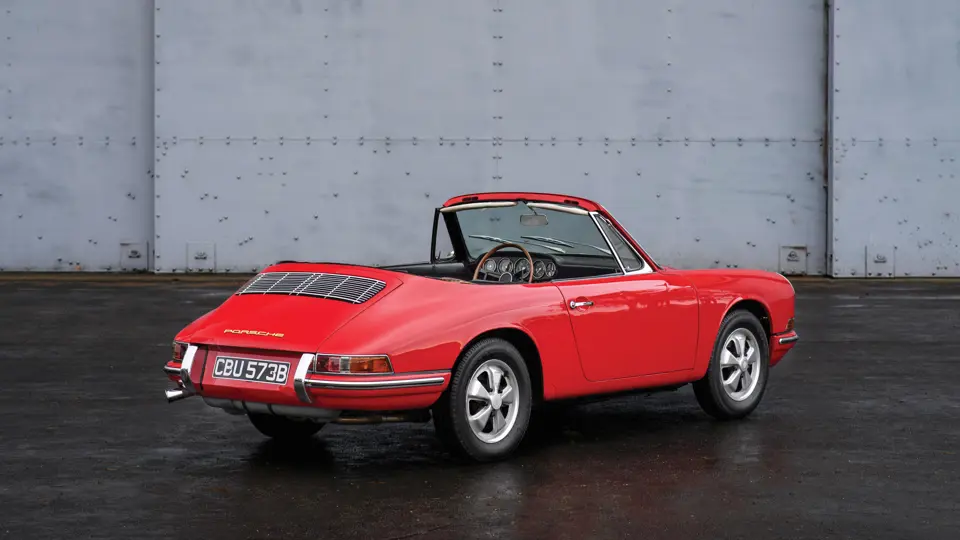
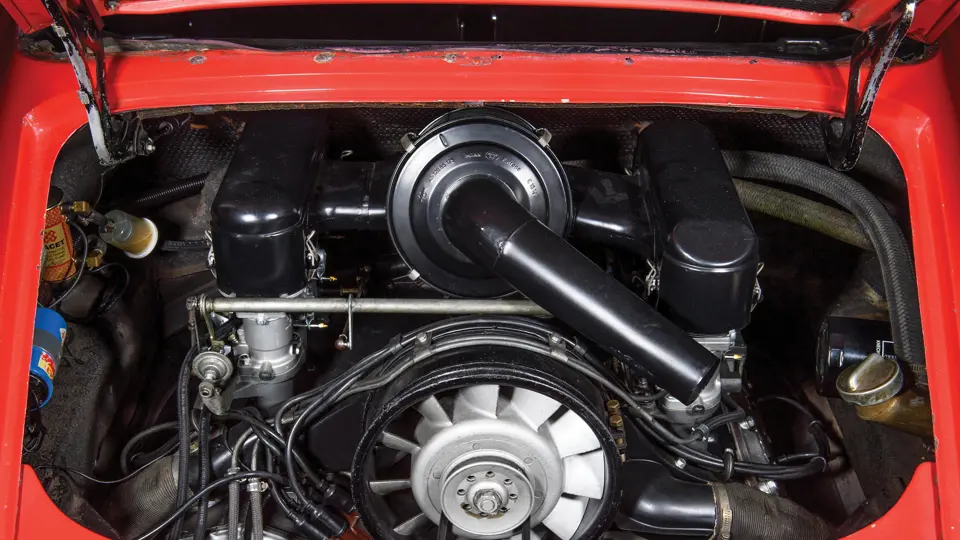
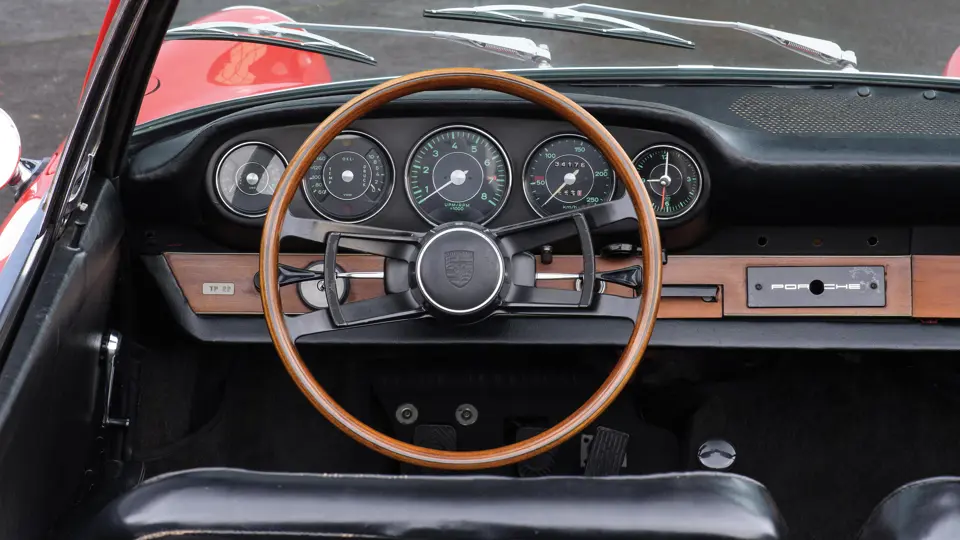


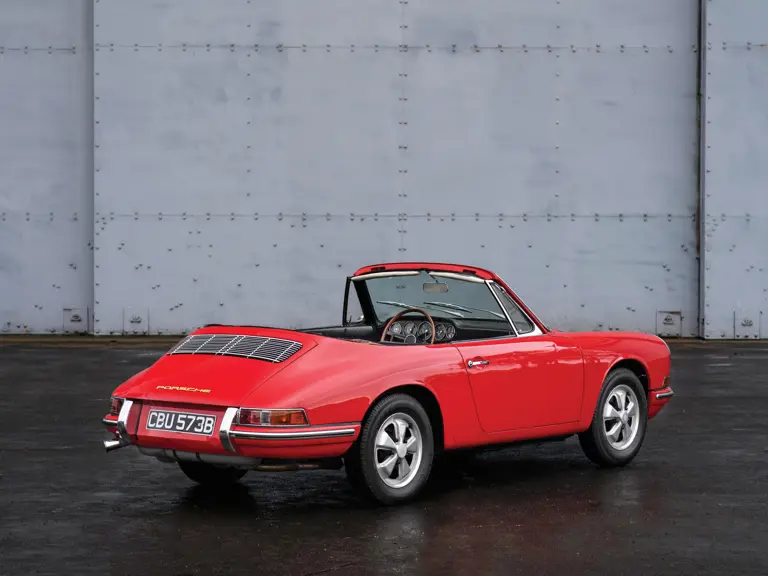

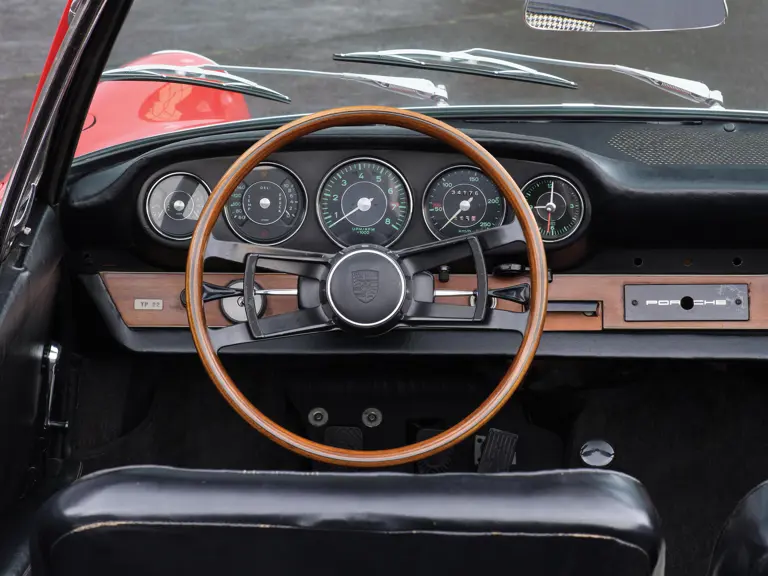
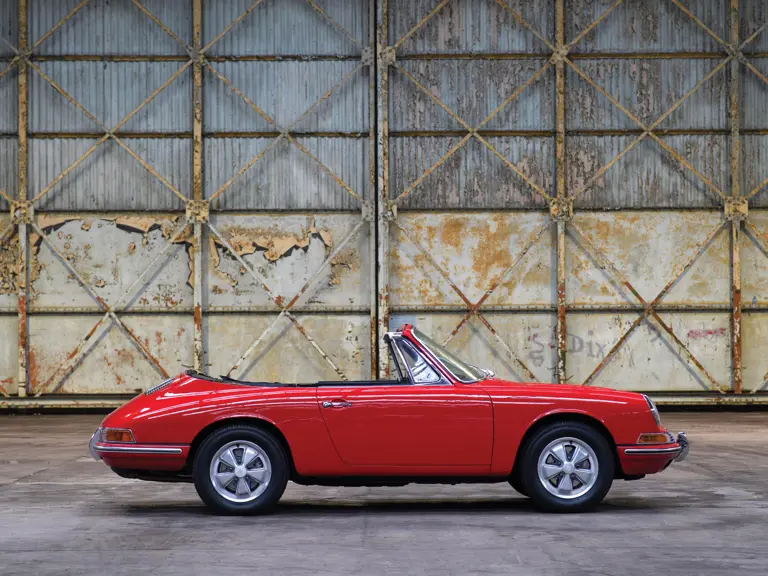
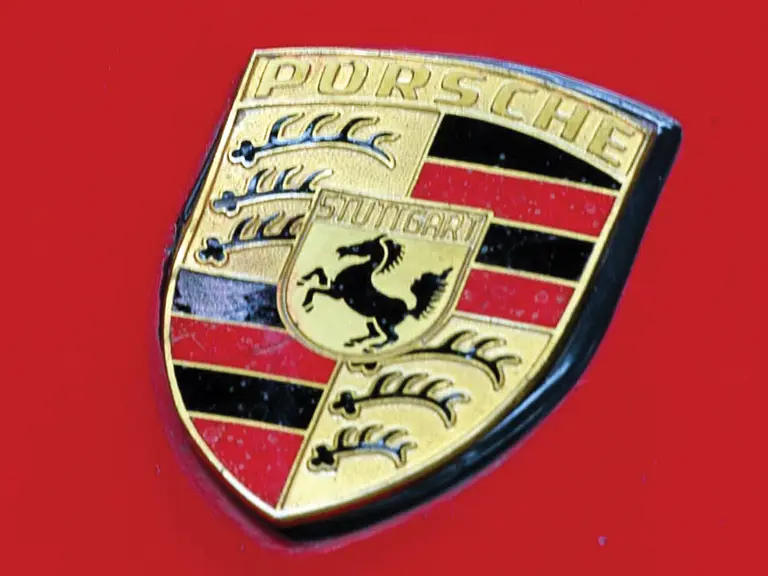
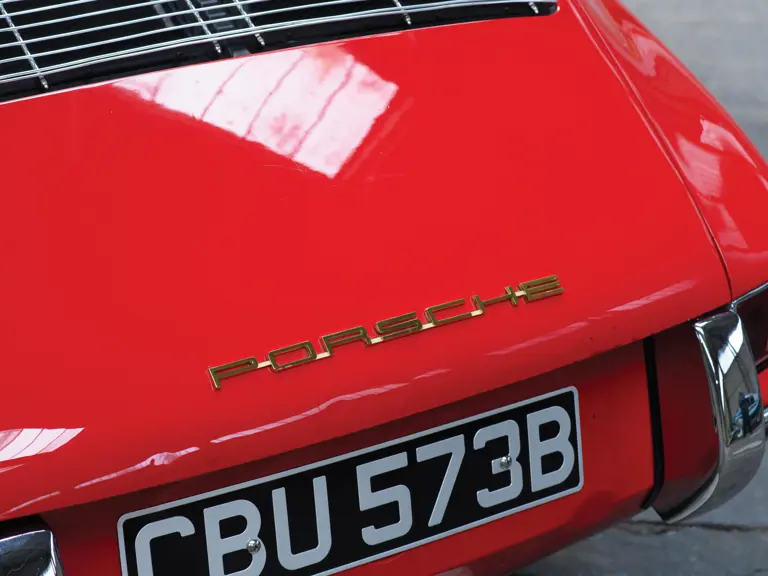
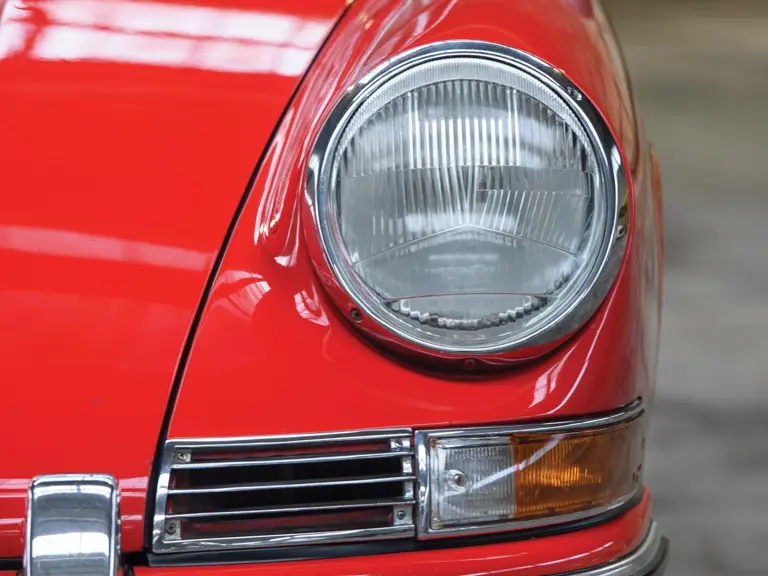

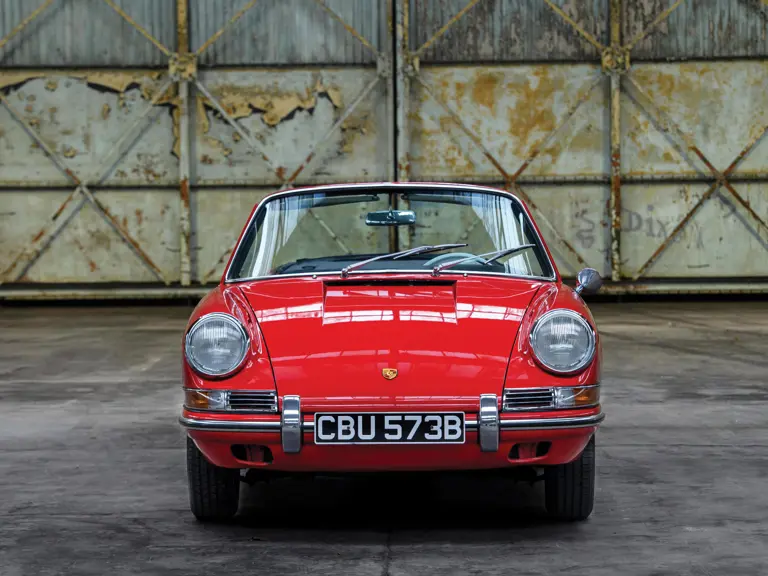
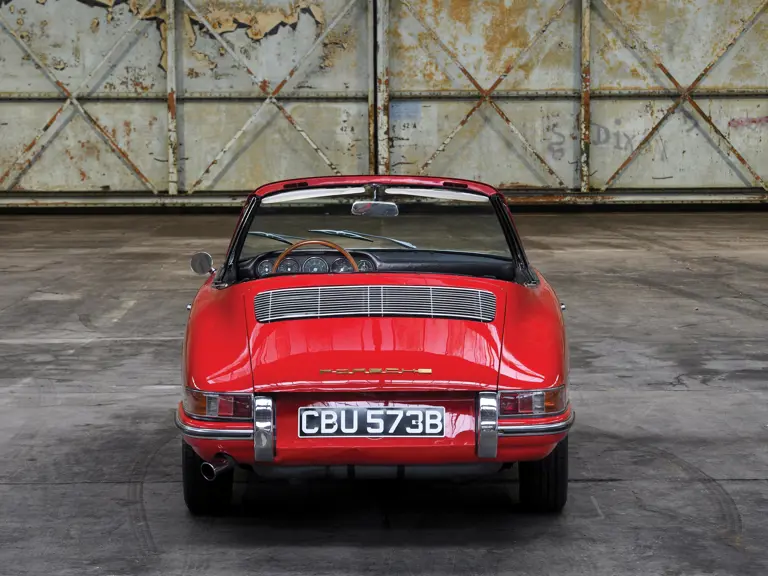
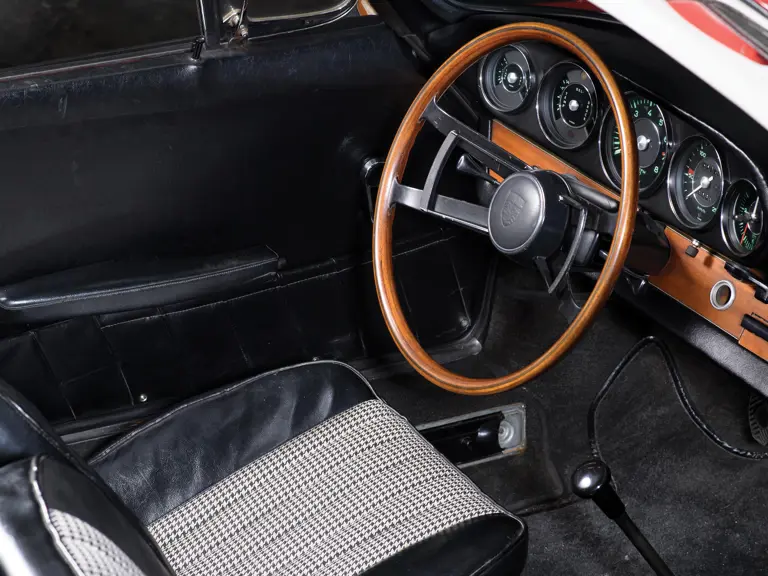

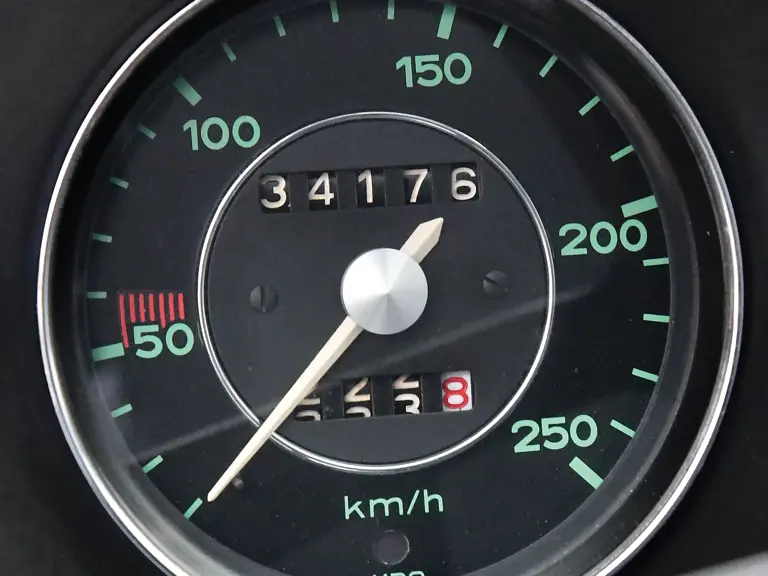
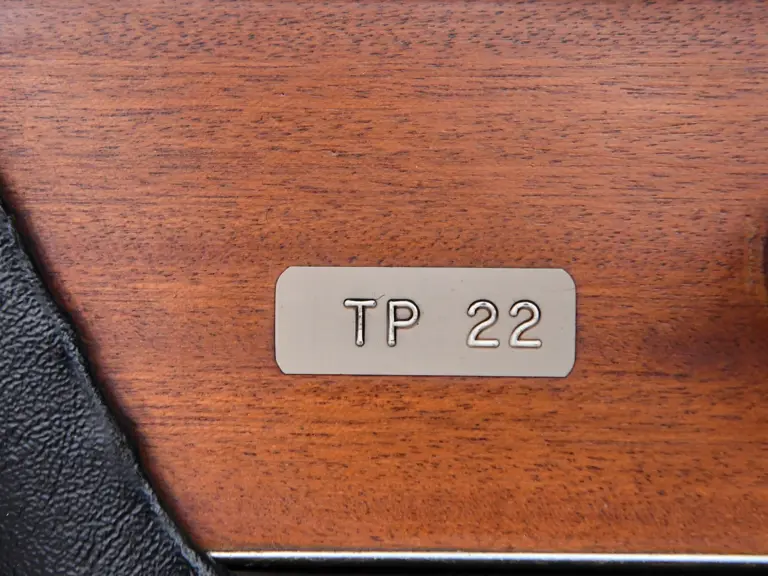

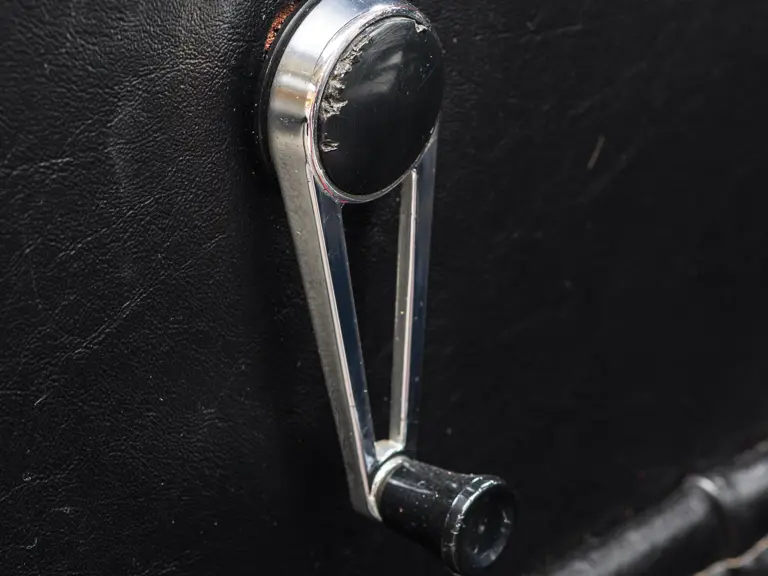

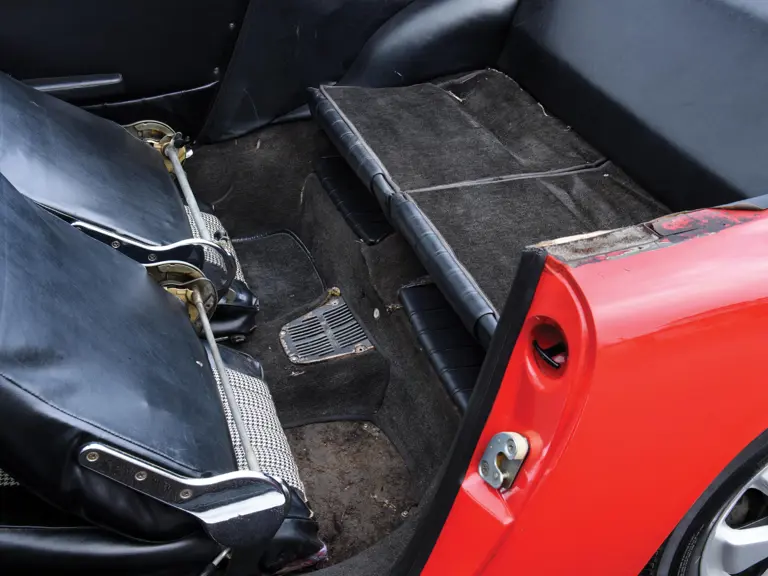
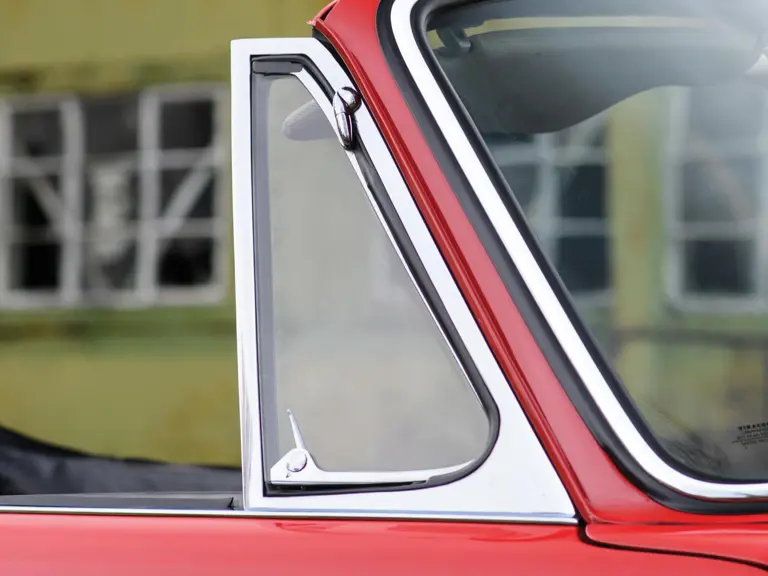
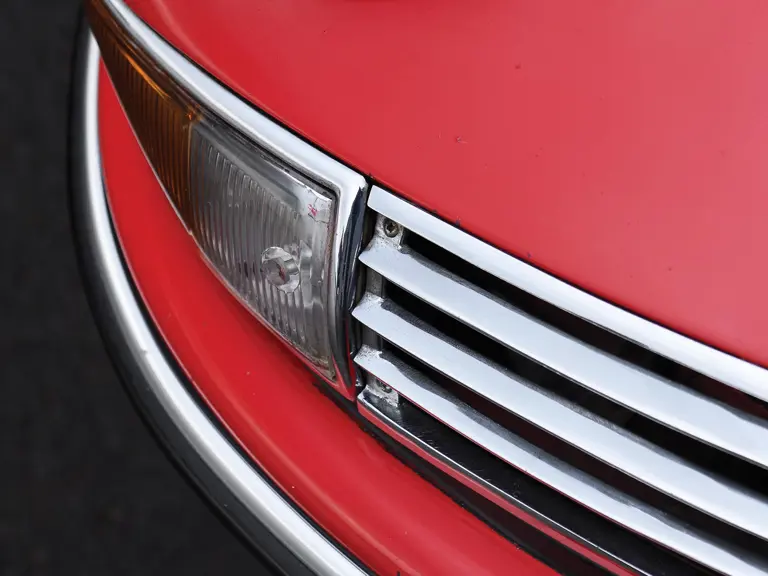
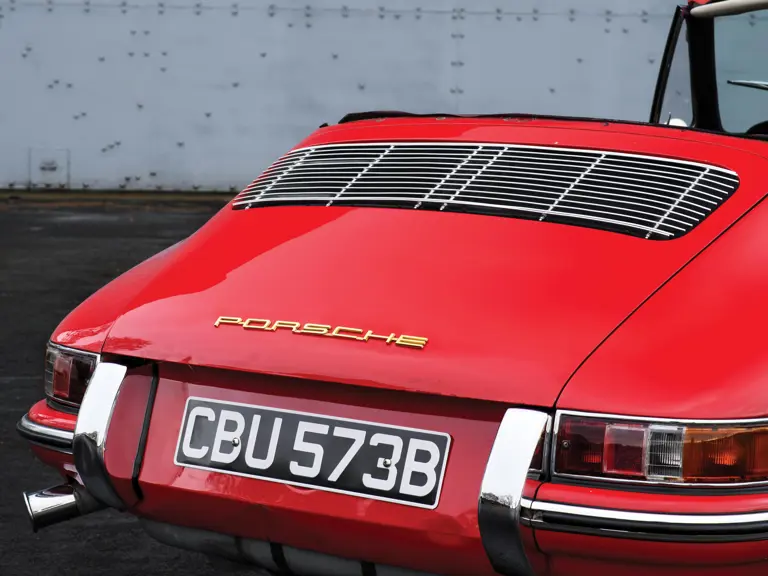
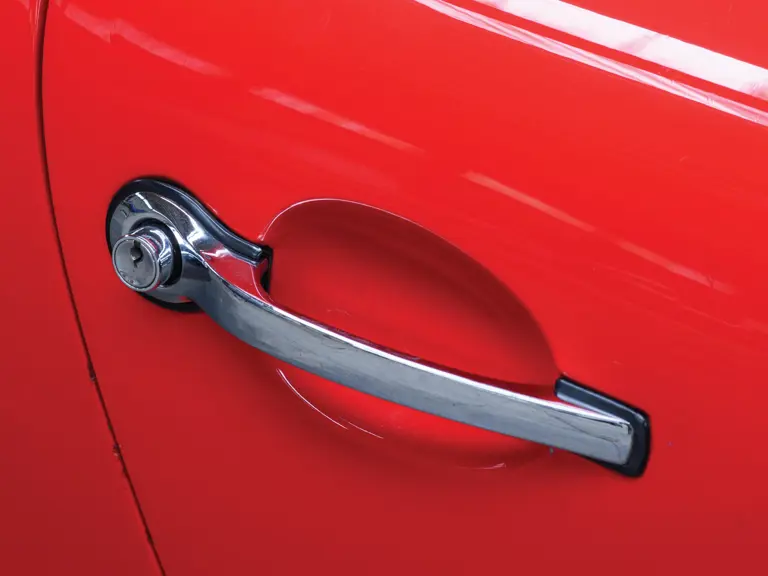
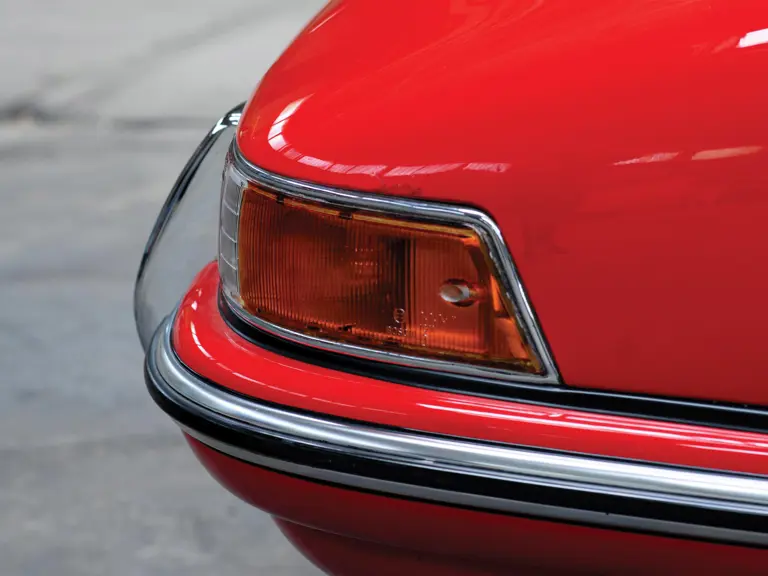

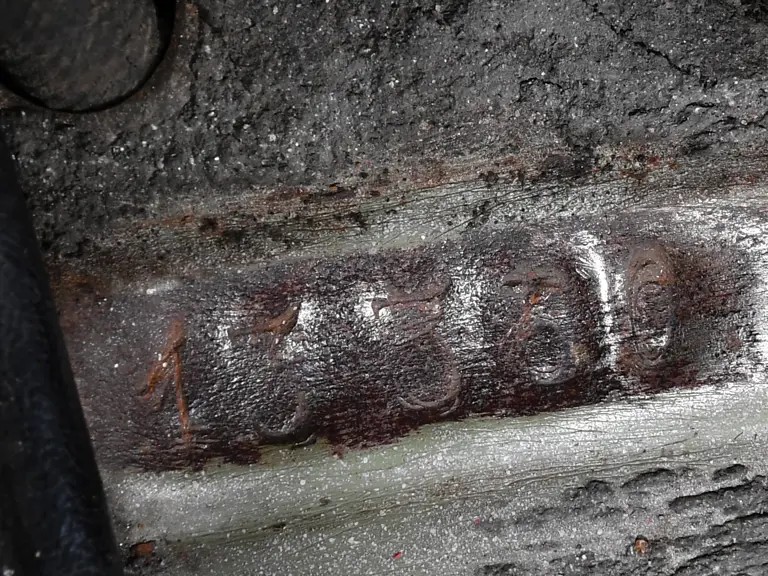
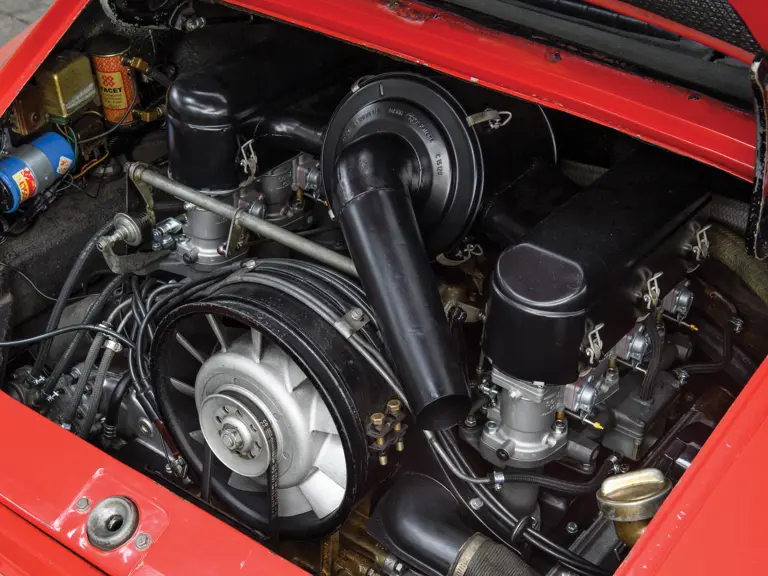
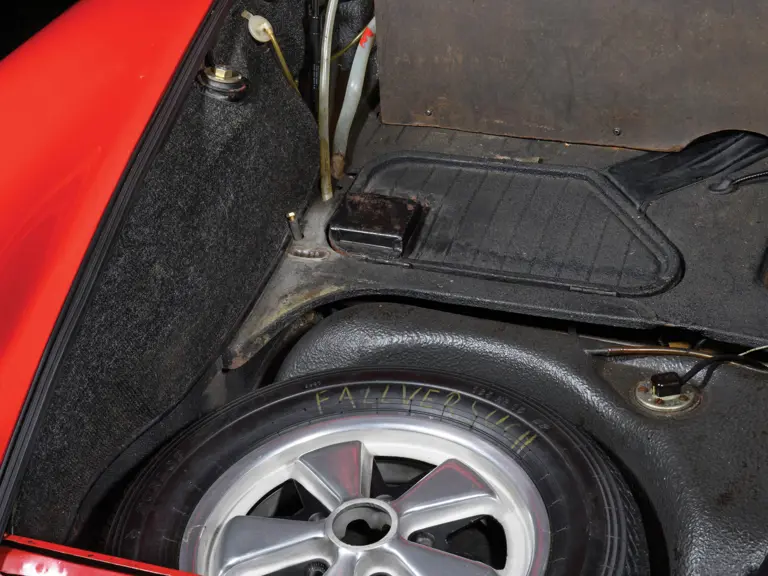

 | Paris, France
| Paris, France
